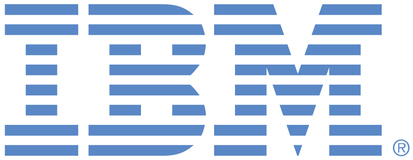
This portal is to open public enhancement requests against IBM Power Systems products, including IBM i. To view all of your ideas submitted to IBM, create and manage groups of Ideas, or create an idea explicitly set to be either visible by all (public) or visible only to you and IBM (private), use the IBM Unified Ideas Portal (https://ideas.ibm.com).
Shape the future of IBM!
We invite you to shape the future of IBM, including product roadmaps, by submitting ideas that matter to you the most. Here's how it works:
Search existing ideas
Start by searching and reviewing ideas and requests to enhance a product or service. Take a look at ideas others have posted, and add a comment, vote, or subscribe to updates on them if they matter to you. If you can't find what you are looking for,
Post your ideas
Post an idea.
Get feedback from the IBM team and other customers to refine your idea.
Follow the idea through the IBM Ideas process.
Specific links you will want to bookmark for future use
Welcome to the IBM Ideas Portal (https://www.ibm.com/ideas) - Use this site to find out additional information and details about the IBM Ideas process and statuses.
IBM Unified Ideas Portal (https://ideas.ibm.com) - Use this site to view all of your ideas, create new ideas for any IBM product, or search for ideas across all of IBM.
ideasibm@us.ibm.com - Use this email to suggest enhancements to the Ideas process or request help from IBM for submitting your Ideas.

IBM does not intend to provide a documentation change for this request, so it is being closed. The existing documentation for Changing CL command defaults, https://www.ibm.com/docs/en/i/7.4?topic=program-changing-cl-command-defaults, discusses the impact of installing a new release on changed commands. That documentation recommends creating a CL program as other comments have suggested. CL command default changes can be tracked by using the QIBM_QCA_RTV_COMMAND exit point which is also described in that documentation.
@pnicolay
Sorry, I wasn't very clear with that--I was interrupted when I entered my comment and finally got back to it when I was trying to get out the door at the end of the day.
All changes are stored in a CL member. The member is not compiled. The utility is generic to process any source member of CL commands. Then we can simply add the CHGCMDDFT command for overrides of supplied command defaults. We also include any system configuration changes with their appropriate command.
Without the utility we would have to compile the CL each time we added or changed something.
Do not change anything in QSYS. It is IBM's property. However, if you need to do so; create a CL program that can be run after any upgrade, TR or PTF.
@Michael... why do you need a utility ?
We just store all our CHGCMDDFT commands in a CL and after an upgrade we just call the CL.
@Frank
Haven't verified your SQL yet, but it doesn't show what we changed (we have plenty more commands than shown).
You can also run the following SQL statement to find all commands that had their defaults changed:
with libs (lib) as (
select objname
from table (
qsys2.OBJECT_STATISTICS('*ALLAVL', '*LIB')
)
)
select lib, objname as cmd, cmds.apar_id, cmds.*
from libs, table (
qsys2.OBJECT_STATISTICS(lib, '*CMD')
) as cmds
where cmds.apar_id = 'CHGDFT' and lib like 'QSYS%'
Every time we modify any supplied objects, we keep a copy of the command in a CL source member. We use a utility (from an old S/3x magazine article) which allows us to execute these commands after each migration or upgrade.
This is how we maintain compliance with our policies.